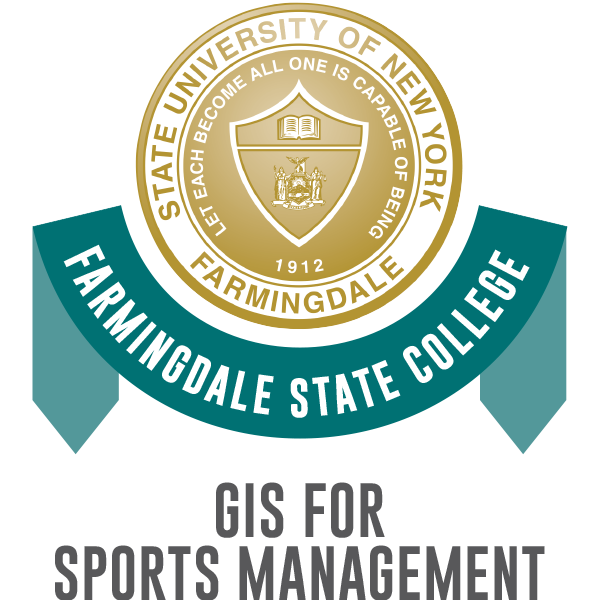
Geographic Information Systems (GIS) for Sports Management
The GIS for Sports Management microcredential is designed for learners looking to improve their understanding of core concepts in sports management with the integration of spatial reasoning and geospatial technologies. Earners will develop workforce-ready GIS skills through the completion of practical, real world projects that extend from raw data analysis to publishable deliverables. Students in the microcredential will be required to complete a capstone project in spatial analysis to complete the microcredential.
Admission requirements for application
- Matriculation into a Farmingdale State College degree program
- Completion of MTH 110 and EGL-101 with a grade of C or better
- Completion of the Microcredential Application on Etrieve
Requirements to earn the microcredential:
- To achieve the GIS for Sports Management microcredential, students will complete four courses: SMT 110 (Introduction to Sports Management), GIS 222 (Geovisualization I), SMT 225 (Sports Marketing), and GIS 332 (Spatial Analysis II). Students must earn a grade of B or better in each of the required courses.
- Students must also complete a capstone project in GIS 332, to be approved by the department, in order to complete the microcredential.
Stackable to:
Time to complete
2 semesters
Cost to attend:
Standard tuition rates apply. For tuition and student consumer information, please click here.
Contact Information
History, Politics and Geography
Memorial Hall, Room #230
934-420-2739
hpg@farmingdale.edu
Monday-Friday 8:30am-5:00pm
SMT 110 Introduction to Sport Management
An investigation into the scope of the sport industry; a growing major business enterprise in the United States and in much of the world. Functions of management, skills and attributes required of a sport manager, and roles of a manager are examined and researched. Attention focuses on how the managerial process relates to sport organizations and their products. Students become acquainted with career opportunities in the sport management field. Note: Students must achieve a C or higher in this class to continue on in any course to which it is a prerequisite.
GIS 222 Geovisualization I
Geographic information systems (GIS) are computer systems designed for the creation, storage, retrieval, analysis, and visualization of spatial data. GIS is applied across fields as diverse as urban planning, environmental management, law enforcement, industrial location, and marketing, and for scientific research in many disciplines. This course is a hands-on course with a required lab period which will introduce students to foundational concepts and skills in working with spatial data, including finding and creating data, spatial analysis, and GIS-based map production. This course is a prerequisite for several upper-level GEO courses. Prerequisite(s): MTH 110 and EGL 101 both with a grade of C or higher Corequisite(s): GIS 221L
SMT 225 Sport Marketing
An investigation into the decisions necessary to plan, develop, implement and control integrated sports marketing programs. Attention will be directed towards each major element of the marketing industry--advertising, promotion, public relations and sponsorships. The emphasis will be on the marketing of professional and collegiate athletes. Included will be the use of marketing for teams, leagues and special events. The course will also focus on negotiations, contracts and the role of the media. Prerequisite(s): SMT 110 with a grade of 'C' or higher
GIS 332 Spatial Analysis II
This upper-level course integrates geographic information systems (GIS) and spatial data analysis, with a focus on quantitative and qualitative methods, procedures for research design, and interpretation of findings. Topics include identification of spatial patterns, hypothesis testing, effective use of statistics, and data correlation. Prerequisite(s): MTH 110, GEO 221 or GIS 222 or permission of department chair.
